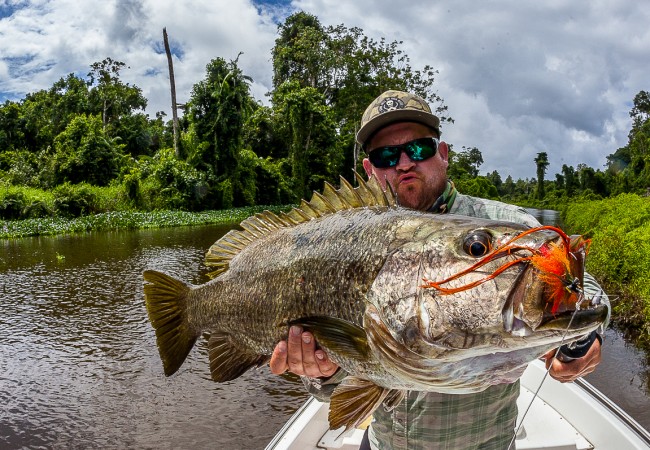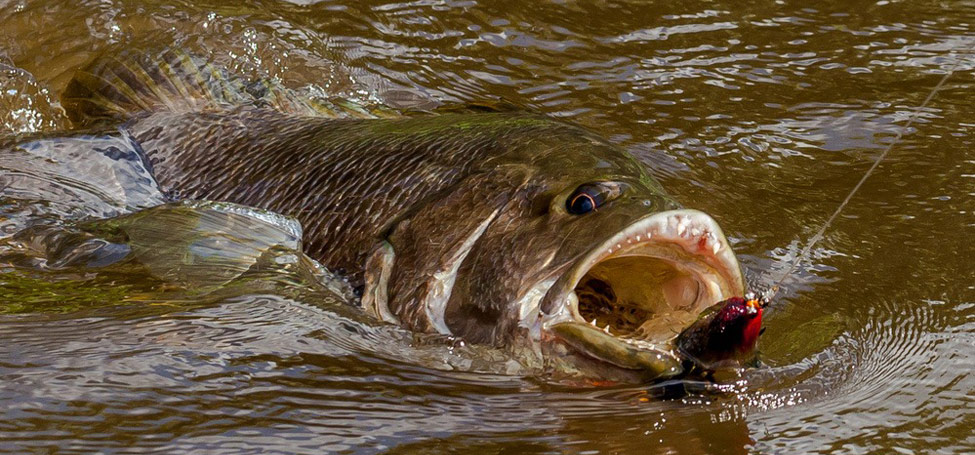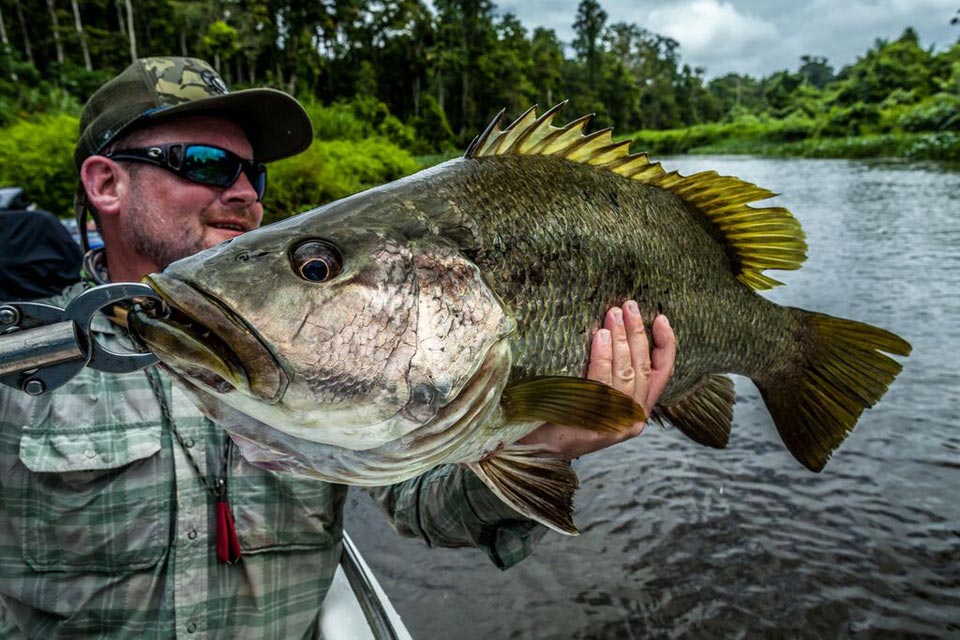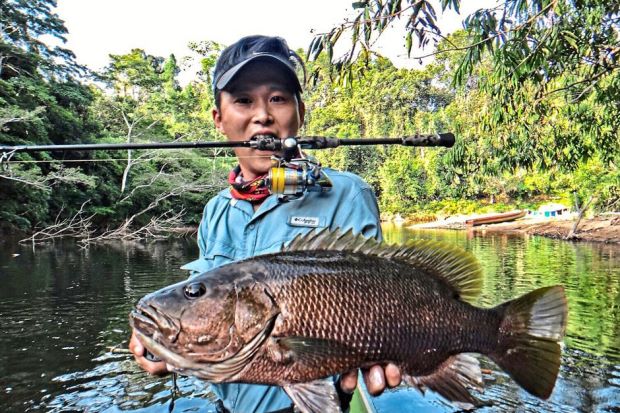The Papuan Bass: one of the most powerful fish on the planet
In line with our last article on golden masheer in india, this time we take you on an incredible adventure in the heart of the wild estuary of Papua New Guinea, in search of a predator considered to be one of the most powerful freshwater fish on the planet : the Papuan Bass.

Papua New Guinea is located in the southwest Pacific Ocean north of Australia and occupies the eastern half of the island of New Guinea. The country is one of the least explored in the world, both culturally and geographically. This island also has one of the wildest river systems in the world and is home to the legendary Papuan Bass (Lutjanus goldiei), which in weight for pound is considered the most powerful freshwater fish in the world.
Papuan bass: a fish full of mysteries
Contrary to what some might think, the Papuan Bass (Lutjanus goldiei) is not a member of the bass family, but snappers that can only be found in estuaries and rivers in New Guinea. Although widely referred to as "bass", it is therefore more of a "Papuan Black Snapper" than a Papuan Bass.

Until the last few years, few people had the chance to see a Papuan bass, let alone catch one. Although it is a robust fish capable of surviving in difficult conditions, its location is indeed restricted to a few areas of Borneo, parts of Indonesia and, of course, the island of New Guinea. .
However, due to the uncontrolled exploitation of its natural habitat, its population has been decimated in many areas except Papua New Guinea where it is increasingly protected by authorities and locals.
Papuan bass vary greatly from fish to fish. Some are dark chocolate brown while others are slightly silvery / yellow. Some believe that it is due to their environment or to the spawning period. But in reality, this species and its life history still remain a complete mystery to scientists. Apart from his dark suit of rust-colored scales, he possesses a large pair of eyes as well as a strong jaw lined with sharp teeth. Large pectoral and dorsal fins complete its image as a powerful predator.
This species can also measure up to a meter in length, or even more. It can also weigh more than 25 kg for the largest specimens.

The papuan bass: an outstanding predator
The Papuan Bass shares its habitat with several other popular species, including Saratoga, most notably the famous Barramundi. Contrary to popular belief, you are also more likely to encounter a large wild barramundi in PNG than in Australia, especially due to the river conditions and the abundance of food found. on this still preserved island.
The very few fishermen who have caught a papuan bass all agree that these fish are extremely difficult to catch. They have all the power of a cubera and live in swift, turbid waters cluttered with trees and rocks. These places indeed provide excellent cover for this fish to trigger a surprise attack. Very opportunistic, his attack is therefore often as unpredictable as it is lightning and often occurs at times when one would least expect it. Which is dangerous since it immediately returns to its hole after attacking its prey.

Faced with the papuan bass, no room for error
The papuan bass has no equal when it comes to hitting a lure with such force and putting your equipment to the test. Quality equipment is therefore essential in order to quickly master this brute and prevent it from returning to its hole: trebles and broken rings must be able to withstand the power of the jaw and rushes of this fish.
For those planning a trip to this fabulous region, here is a list of equipment used by fishermen in the region
Reels
- Daiwa Ryoga Bay Jigging
- Abu Garcia Toro Beast
- Shimano Tranx 300HG
- Calcutta Conquest 300/400
Cannes
- Deps Huge Custom
Terminal Tackle & Accessories:
-
Owner ST-66 or ST 56, BKK Raptor Z or Decoy YS-81 hooks
-
Broken Rings Owner Hyper Wire
-
Fluorocarbon leader 80 - 120lb
-
Hard baits type Duo Realis, Fangbait 140 SR, Deps cascabel 400, Halco Scorpion, Oargee Oarsome, Rapala Super Shad Rap